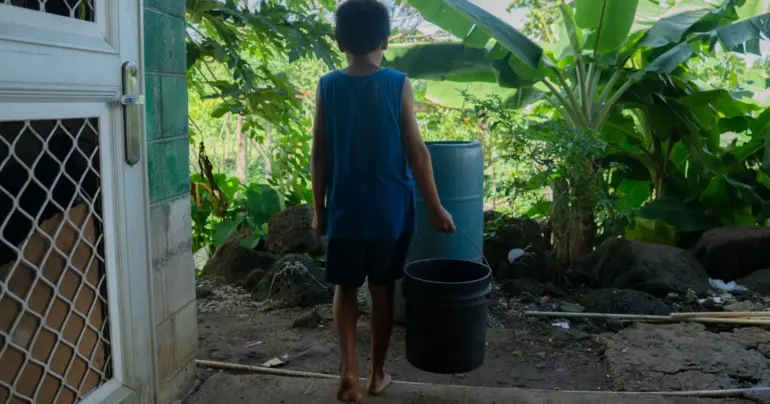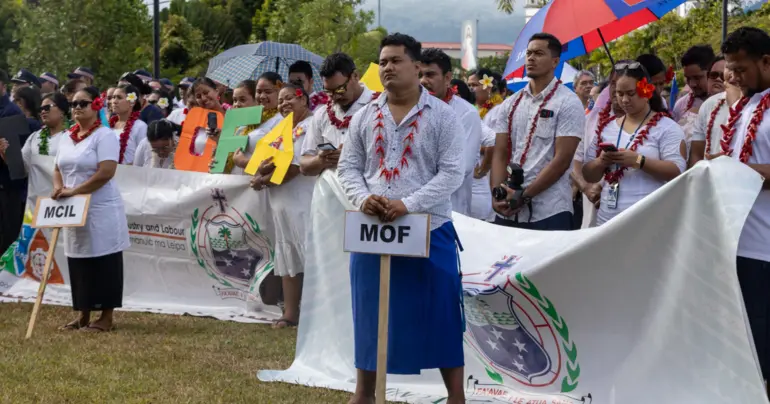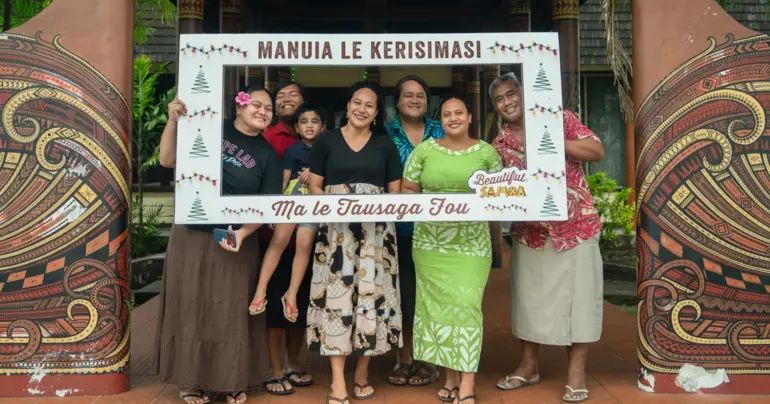Intimidation of the Judiciary and political rhetoric
 By The Editorial Board
•
02 August 2021, 12:00AM
By The Editorial Board
•
02 August 2021, 12:00AM
Last Friday members of the Human Rights Protection Party (H.R.P.P.) took to the road on Upolu, to join a vehicle convoy protest against the Judiciary, following the Appellate Court’s decision 10 days ago to install the Fa’atuatua i le Atua Samoa ua Tasi (F.A.S.T.) Government.
The Samoa Observer reported in its Saturday 31 July 2021 edition (H.R.P.P. convoy protest floods Mulinu’u) that close to 200 vehicles participated in the around-the-island protest, and draped in the Samoan flag all later converged on Mulinu’u.
The former prime minister and party leader Tuilaepa Dr. Sa'ilele Malielegaoi, who gave his blessings for the protest, was on hand Friday to welcome the convoy of protesters together with his deputy Fonotoe Pierre Lauofo.
Tuilaepa refused to call the vehicle convoy last Friday a protest march, and instead described it as a “political rally” whose objective is to “restore and respect the integrity and dignity of this nation’s Constitution.”
Despite the veteran politician’s best effort to gloss over his supporters’ actions last Friday, it is still a protest movement against the decision of an authority in the Court, regardless of whichever way he describes it.
In fact the use of vehicles as a form of protest is not a new phenomenon and gained traction in the U.S. in the 1960s and 70s, as part of the civil rights movement and later the “tractorcade” controversy, when hundreds of American farmers drove their tractors to Washington D.C., and demanded they be paid more for their crops and have a say in agricultural policies.
Late last year and early this year, the supporters of former U.S. President Donald J. Trump used vehicle protests to show their opposition to President Joe Biden’s inauguration, while falsely claiming Trump’s election was stolen.
The similarities between the vehicle protests by Trump’s supporters in the U.S. and those of the H.R.P.P. here in Samoa last Friday are striking: use of the national flags as a symbol of legitimacy and claims of loss of public office through the actions of authorities (in the U.S. pro-Trump supporters allege voter fraud which is false, while in Samoa Tuilaepa continues to falsely claim the Head of State has powers over the Court).
But there is more to this debate, then just citizens exercising their constitutional right to assembly to express their grievance.
In a letter dated 30 July 2021 addressed to the Police Commissioner, Fuiavaili'ili Egon Keil, Supreme Court Justice Vui Clarence Nelson expressed concern that the protest by the H.R.P.P. supporters threatened the safety of the members of the Judiciary.
“I also express some concern at the security and safety of the judges as strong words are being directed at them by these self-professed Constitutional experts,” Justice Nelson wrote in his letter.
“I write to respectfully request that in future, before issuing such blanket permits, you please take these matters into consideration.
“While I fully respect people’s right to a peaceful protest, in my humble opinion this should not be exercised in a manner that interferes with the normal work of the courts of the country.
“The HRPP road convoy [on Friday] morning resulted in a blockage of the Main Beach Road at Mulinu’u interfering with the access of counsels, the judges, court staff and members of the public to the Court Building at Mulinu’u.”
It is not surprising a Supreme Court Justice has written to the Police Commissioner to express his concerns, as we all know the Court precinct at Mulinu’u can only be accessed through Beach Road, as pointed out by Justice Nelson.
So was the vehicle convoy protest that converged on Mulinu’u last Friday a deliberate attempt by the party’s members and leaders to intimidate our esteemed members of the bench of both the Supreme Court and the Appellate Court?
Revelations by Justice Nelson that the vehicle convoy protest had an impact on lawyers, judges, court staff and the public accessing the Court precinct last Friday are a worry especially with another protest planned for Monday morning.
Therefore, what guarantee can the Acting Police Commissioner Papali’i Monalisa Tiai-Keti give of not only access – but trouble-free access to the Court precinct – in light of the Supreme Court Justice revealing in his letter that attempts by people to access the Court precinct were “interfered” with last Friday?
It is puzzling that some of the country’s brightest minds – including lawyers with many years of courtroom experience – continue to peddle Tuilaepa’s grossly flawed interpretation of the law that the Head of State and his decisions are not subject to Supreme Court oversight.
Or is this a case of the former Prime Minister being privy to substandard legal advice, which he continues to promulgate through the various media and social media platforms, unfazed by the ramifications of misinforming the people?
Perhaps, Fonotoe should tell his party leader that the rule of law represents one of the pillars of Samoa’s democracy, and in its most basic form means that it (the law) applies equally to everyone including elected leaders.
Acceptance of the Courts’ judgments – which were submitted and argued before a competent, independent and impartial bench before reaching a decision – is a cornerstone of the rule of law pillar that this country’s forebears wrote into the Constitution close to 60 years ago.
Nonetheless as rational beings we should be able to differentiate right from wrong and good political rhetoric from bad that can divide the nation. Let’s be vigilant.
 By The Editorial Board
•
02 August 2021, 12:00AM
By The Editorial Board
•
02 August 2021, 12:00AM










